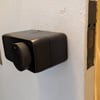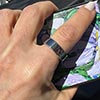Windows 11 keyboard shortcuts make it easier to navigate your PC without reaching for the mouse. These handy key combinations allow you to zip through tasks and access features that might otherwise be buried in menus.
There are dozens of Windows shortcuts available, but there is a subset that I use all the time and that will help most people. I've shared my favorites below. Some have been around for years, but there are also newer ones that you may not be aware of, which I've found particularly helpful. For instance, I'm currently loving the shortcut that allows me to type notes with my voice. Whatever your work and work style, there are bound to be at least a few keyboard shortcuts that will save you time and effort.
Must-Know general Windows shortcuts
You can find the full set of Windows shortcuts on Microsoft.com broken out by operating system, but these are the important ones.
Shortcuts when editing documents
Ctrl + A – Select all items in a document or window
Ctrl + C – Copies selected text or item
Ctrl + X – Cuts selected text or item
Ctrl + V – Pastes text or item on clipboard to your cursor location or designated file location.
Ctrl + D – Delete selected text or item
Ctrl + Z – Undo something
Ctrl + Y – Redo something
Ctrl + B – Turn on or turn off bold
Ctrl + I – Turn on or turn off italics
Ctrl + U – Turn on or turn off underline
Shift with any arrow key – Select more than one item in a window or on the desktop, or select text within a document
Ctrl + Shift with any arrow key – Selects blocks of text by paragraph. Keep holding down first two buttons and each time you hit the arrow key successively more paragraphs are highlighted.
Ctrl + Shift with End key – Selects all text from the cursor to the end of the document.
Ctrl + Shift with Home key – Selects all text from the cursor to the beginning of the document.
Ctrl + Right arrow – Move the cursor to the beginning of the next word.
Ctrl + Left arrow – Move the cursor to the beginning of the previous word.
Ctrl + Down arrow – Move the cursor to the beginning of the next paragraph.
Ctrl + Up arrow – Move the cursor to the beginning of the previous paragraph.
Ctrl + either the plus (+) or minus (-) signs – Zooms in or out.
Ctrl + S – Save a document.
Ctrl + P – Print a document.
Windows key + the period (.) key – Opens the Emoji panel
Shortcuts for navigating the desktop, apps and settings
Ctrl + Shift + Esc – Opens the task manager.
Ctrl+plus (+) or Ctrl+minus (-) – Zoom in or out of a large number of items, like apps pinned to the Start screen
Alt + Tab – Switch between open apps
Windows logo key +Tab – Cycle through open apps
Shift + Delete – Delete the selected item without moving it to the Recycle Bin first
Windows key + D – Pulls up or hides the Desktop.
Windows logo key + L – Lock your PC or switch users
Windows logo key + M – Minimize all windows
Windows logo key + Shift + M – Restore minimized windows on the desktop
Ctrl + Alt with any arrow key – Rotate entire screen in direction of arrow key. Helpful for viewing photos or videos that aren't right-side up.
Windows 11 shortcuts
Windows logo key + A – Open Quick Settings (Bluetooth, WiFi, Airplane Mode, Battery Saver, Brightness, and more)
Windows logo key + C – Open Chat from Microsoft Teams
Windows logo key + E – Open File Explorer
Windows key + H – Launch voice typing
Windows key + K – Open Cast from Quick Settings
Windows logo key + N – Open notification center and calendar
Windows logo key + P – Open Project setting when using an external display. Choose from duplicating on both displays, extending the PC screen to the second screen, or showing only the PC screen or external display.
Windows logo key + S – Search for any file or an app installed on your computer
Windows logo key + Shift + S – Opens the Snipping Tool so you can take a screenshot
Windows logo key + W – Open Widgets
Windows key + V – Opens up your clipboard so you can see and select items from your clipboard history to paste.
Windows logo key + Z – Open the snap layouts
Read more: How to Update Windows 11 to Keep Your Operating System Secure
Updated 8/22/2024 with additional Windows 11 shortcuts
[image credit: Screenshot via Techlicious, laptop mockup via Canva]
For the past 20+ years, Techlicious founder Suzanne Kantra has been exploring and writing about the world’s most exciting and important science and technology issues. Prior to Techlicious, Suzanne was the Technology Editor for Martha Stewart Living Omnimedia and the Senior Technology Editor for Popular Science. Suzanne has been featured on CNN, CBS, and NBC.















From Denys on March 06, 2013 :: 12:42 pm
Just got Windows8 and I’m operating on a traditional PC. And yes it takes a little bit of getting use to. Your list of key shortcuts just made my day!
Reply